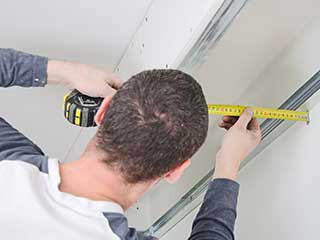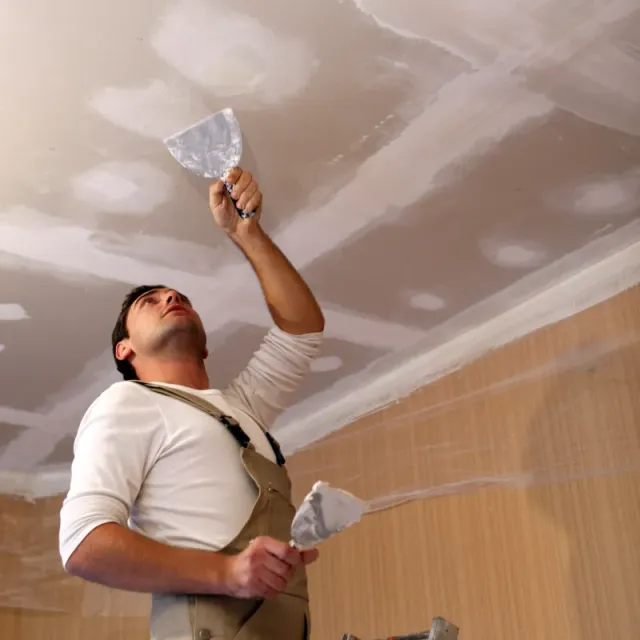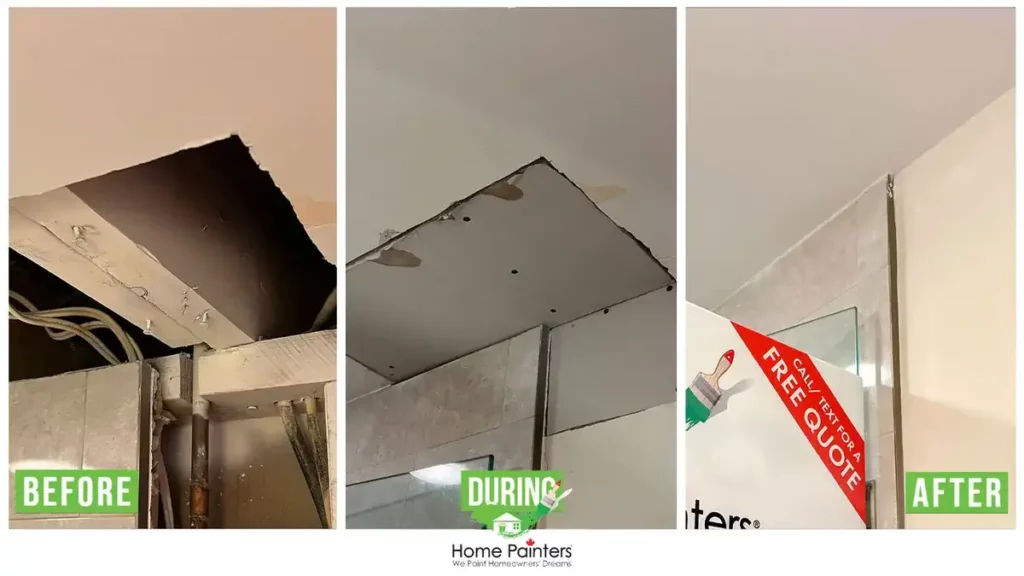Step-by-Step Approaches to Achieving Flawless Drywall Repair Service and Installation
Attaining flawless drywall fixing and installation calls for a systematic approach. It includes recognizing the various sorts of drywall and the devices essential for the job. Proper location preparation is vital prior to starting any type of job. drywall contractor. Each action, from patching holes to mounting new sheets, demands interest to detail. The process does not finish with setup; finishing techniques are vital for a sleek appearance. The next steps will assure a seamless result, but exactly what do they involve?
Comprehending Drywall Types and Devices Needed

The setup tools are just as essential. An utility knife is crucial for cutting drywall sheets, while a drywall saw can help in making specific cuts for outlets or components. T-squares ensure precise measurements, and drywall screws or nails secure the panels to wall surface studs. In addition, a drywall lift can assist in the installment of large sheets, minimizing physical pressure. Familiarity with these devices and types considerably adds to the performance and quality of drywall projects.
Preparing the Location for Repair Work or Installation
Preparing the location for drywall repair work or installment is vital to guarantee a smooth and effective procedure. Initially, the surrounding space needs to be free from furniture and various other barriers to offer adequate functioning space. This not just ensures safety and security yet likewise avoids damage to valuables. Next, it is necessary to cover the flooring with decline towels to capture any type of debris or dust produced during the job.
In addition, the wall surfaces ought to be evaluated for any type of loose paint or wallpaper that might interfere with adhesion. Removing these aspects creates a tidy surface area for the new drywall. Prior to beginning, it is recommended to switch off power to electric outlets or components around. Guaranteeing appropriate illumination in the work area will certainly better boost visibility and focus during the fixing or installment process. Interior Painting. By thoroughly preparing the area, one lays the foundation for a successful drywall job
Step-by-Step Refine for Patching Holes

Covering openings in drywall requires a systematic strategy to ensure a seamless fixing. The very first step involves examining the dimension of the hole. For little holes, a patching substance may be enough, while bigger holes demand a patch. Next, the damaged location should be cleaned and prepared by getting rid of any type of loose debris.
For small openings, applying spackling substance with a putty knife is advised, smoothing it over the opening and feathering the edges. Once dry, sanding the location ensures a smooth surface. For larger openings, a drywall spot ought to be cut to size, placed over the hole, and secured with screws. After installing the spot, the exact same spackling procedure is repeated, followed by fining sand.
Ultimately, the patched location must be topped and repainted to match the bordering wall. This careful procedure assures a professional look and expands the life expectancy of the repair.
Setting Up New Drywall Sheets: A Comprehensive Guide
Mounting brand-new drywall sheets calls for careful preparation and execution to guarantee a tough and visually enticing coating. The area should be measured accurately to determine the number of sheets required. It is crucial to select the best density, normally 1/2-inch for indoor wall surfaces and 5/8-inch for ceilings or fire-rated applications.
Next, the studs or framework ought to be inspected for any irregularities, seeing to it they are straightened and properly spaced. When putting the drywall sheets, they must be placed horizontally to lessen seams and boost structural honesty. A drywall lift can be advantageous for overhead setups.
Fastening the sheets with drywall screws at suitable intervals ensures a protected installation. It's important to countersink the screws somewhat below the surface to plan for the ending up process. Complying with these standards will bring about a strong foundation, prepared for the next action in drywall finishing.
Ending Up Touches: Insulation, Mudding, and Fining Sand Strategies
As soon as the drywall sheets are securely fastened, the emphasis shifts to the complements that will supply a sleek appearance. This process starts with taping, making use of you could check here either paper or fiberglass mesh tape to cover the joints in between sheets. The tape ensures a smooth shift, reducing the risk of fracturing. Following insulation, mudding is important; a joint substance is applied over the tape to load spaces and develop a smooth surface. Normally, numerous layers are required, each one feathered out better than the previous to lessen visibility.
After enough drying out time, sanding is the last step in accomplishing a remarkable coating. A fine-grit sandpaper is utilized to smooth the dried out substance, ensuring there are no blemishes or bumps. Focus to detail during this stage is significant, as it substantially impacts the total look of the wall. Completion result ought to be an also, professional-looking surface ready for priming and painting.
Often Asked Concerns
How Do I Pick the Right Drywall Thickness for My Task?
To select the best drywall density, consider the job's objective, area, and architectural requirements. Criterion thicknesses include 1/2-inch for general usage and 5/8-inch for fire-rated applications, making sure resilience and conformity with building ordinance.

Can I Install Drywall Over Existing Drywall?
Yes, setting up drywall over existing drywall is feasible. Nevertheless, it is essential to guarantee the underlying surface is safe and secure and complimentary from damage. Appropriate attachment and factor to consider of density are critical for a successful installation.
What Are the very best Practices for Drywall Disposal?
The best methods for drywall disposal include recycling when possible, using neighborhood waste administration services, and complying with standards for dangerous materials if appropriate. Drywall Repair Ogden UT. Correctly identifying and sealing waste guarantees conformity and security throughout disposal
Exactly how Long Should I Await Mud to Dry Before Sanding?
Usually, one need to wait 24-hour for drywall mud to completely dry prior to fining sand. Drying time can vary based on moisture and temperature, so checking for a firm appearance is suggested prior to proceeding.
Are There Eco-Friendly Drywall Options Available?
Yes, environment-friendly drywall alternatives are offered. These alternatives usually use recycled materials, low-VOC adhesives, and sustainable production approaches, lowering ecological impact while supplying effective insulation and longevity for different building and construction and improvement jobs.
An utility blade is crucial for reducing drywall sheets, while a visit this site right here drywall saw can assist in making specific cuts for components or electrical outlets. Preparing the area for drywall fixing or installation is vital to guarantee a smooth and effective procedure. Patching openings in drywall her explanation calls for a systematic method to guarantee a smooth fixing. Setting up new drywall sheets needs cautious preparation and execution to assure a aesthetically attractive and durable finish. Yes, mounting drywall over existing drywall is feasible.